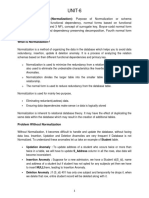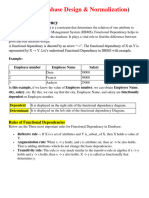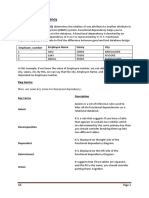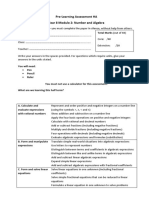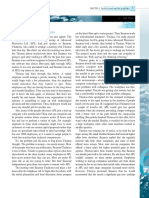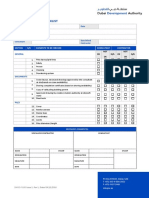0% found this document useful (0 votes)
105 views23 pagesDBMS Unit-3 Notes
Functional dependency determines the relationship between attributes in a database. There are four main types of functional dependencies: multivalued, trivial, non-trivial, and transitive. Normalization is the process of organizing data to eliminate redundancy and anomalies through dividing tables and linking them with relationships based on functional dependencies.
Uploaded by
kanikasolanki2003Copyright
© © All Rights Reserved
We take content rights seriously. If you suspect this is your content, claim it here.
Available Formats
Download as PDF, TXT or read online on Scribd
0% found this document useful (0 votes)
105 views23 pagesDBMS Unit-3 Notes
Functional dependency determines the relationship between attributes in a database. There are four main types of functional dependencies: multivalued, trivial, non-trivial, and transitive. Normalization is the process of organizing data to eliminate redundancy and anomalies through dividing tables and linking them with relationships based on functional dependencies.
Uploaded by
kanikasolanki2003Copyright
© © All Rights Reserved
We take content rights seriously. If you suspect this is your content, claim it here.
Available Formats
Download as PDF, TXT or read online on Scribd
/ 23


